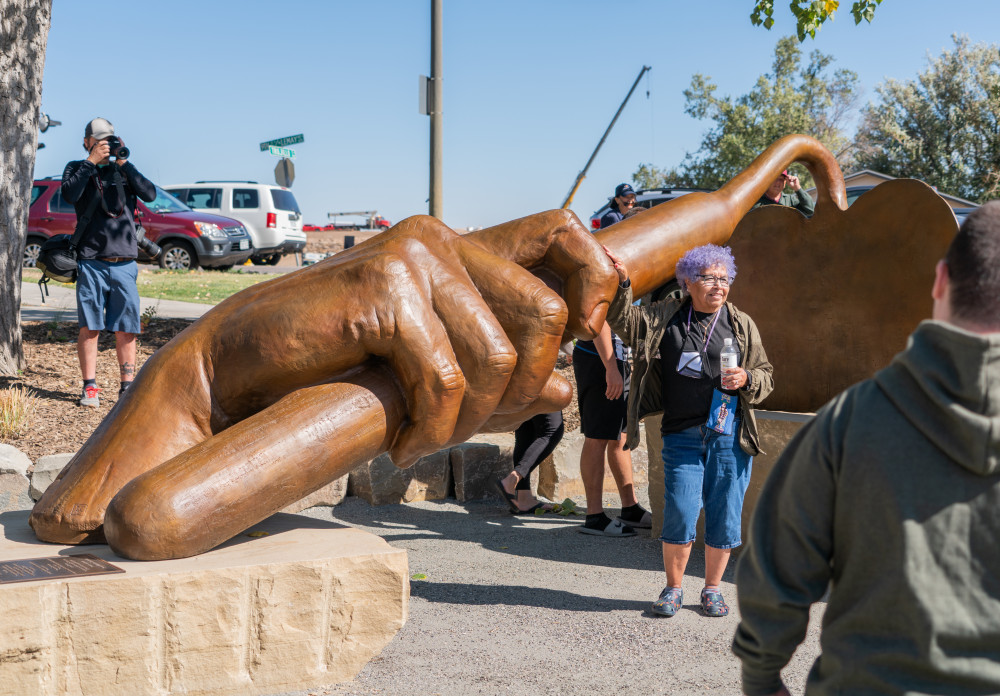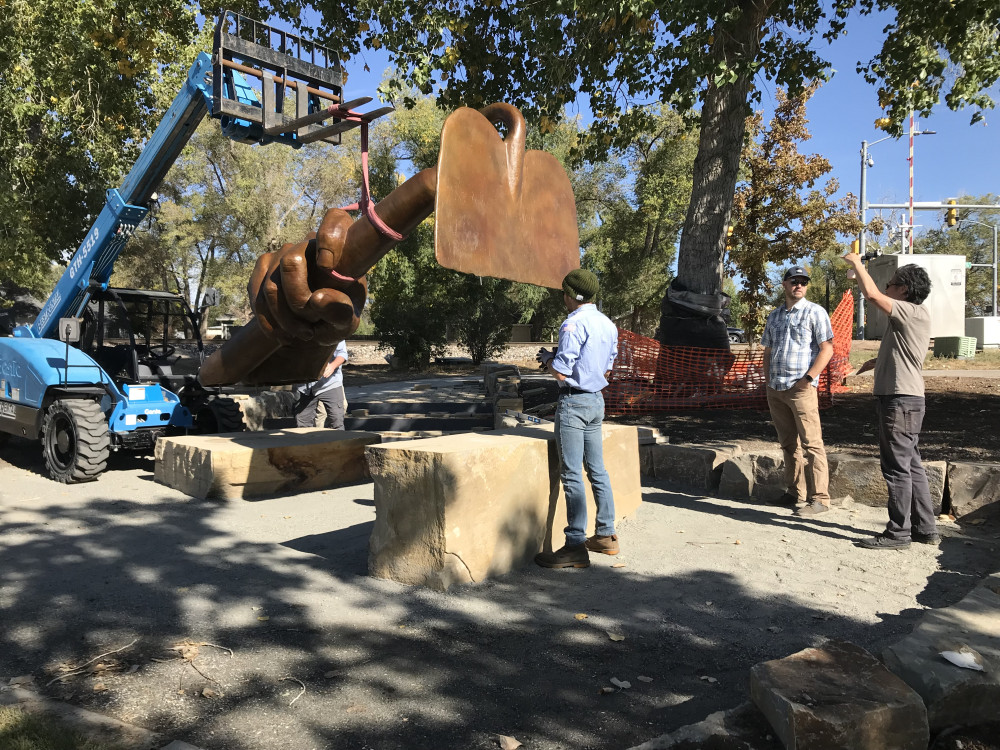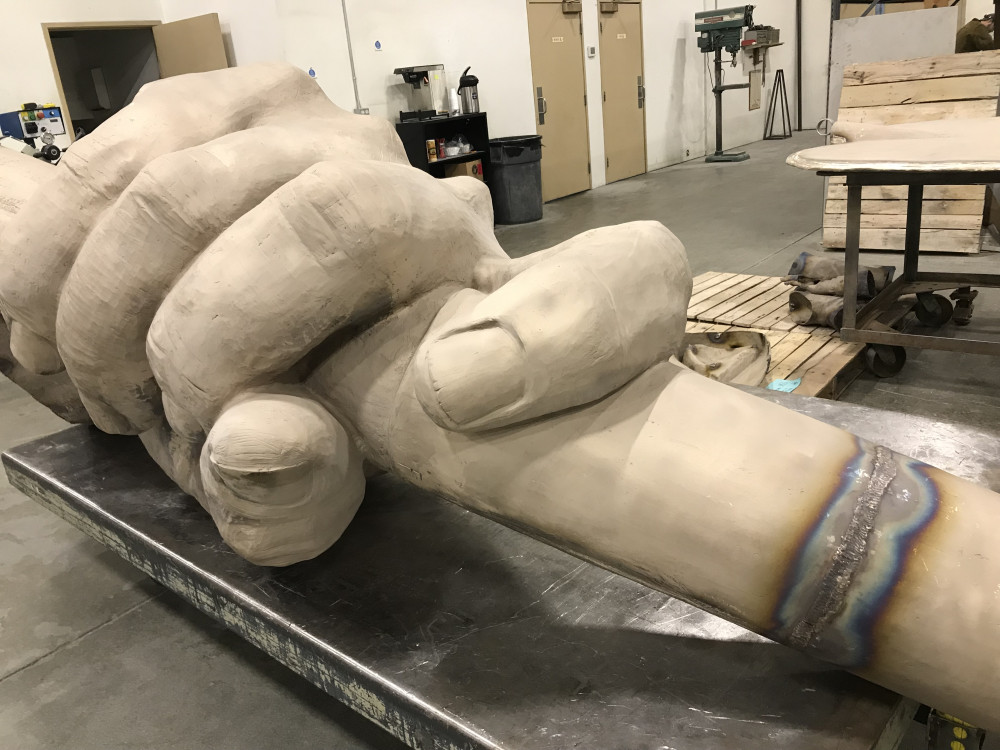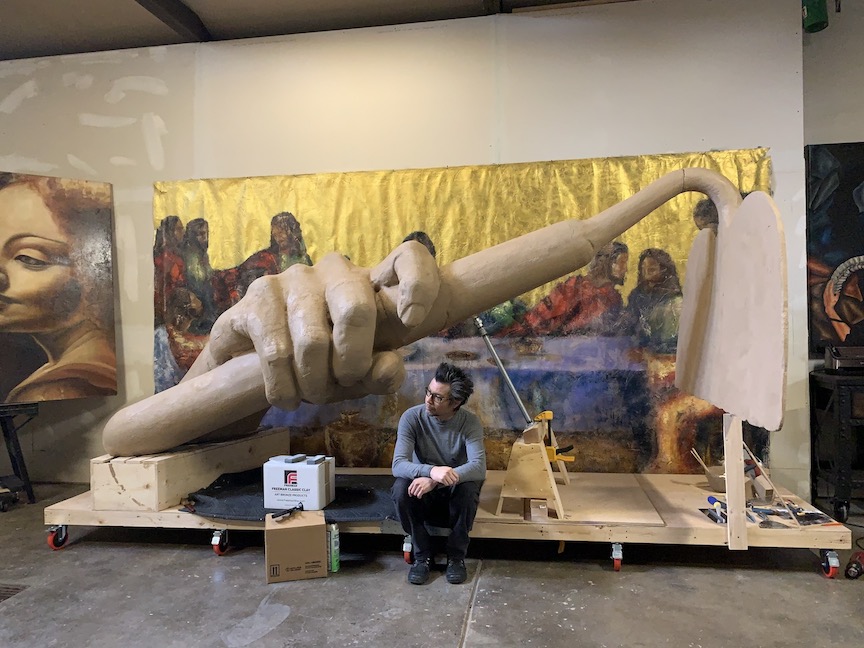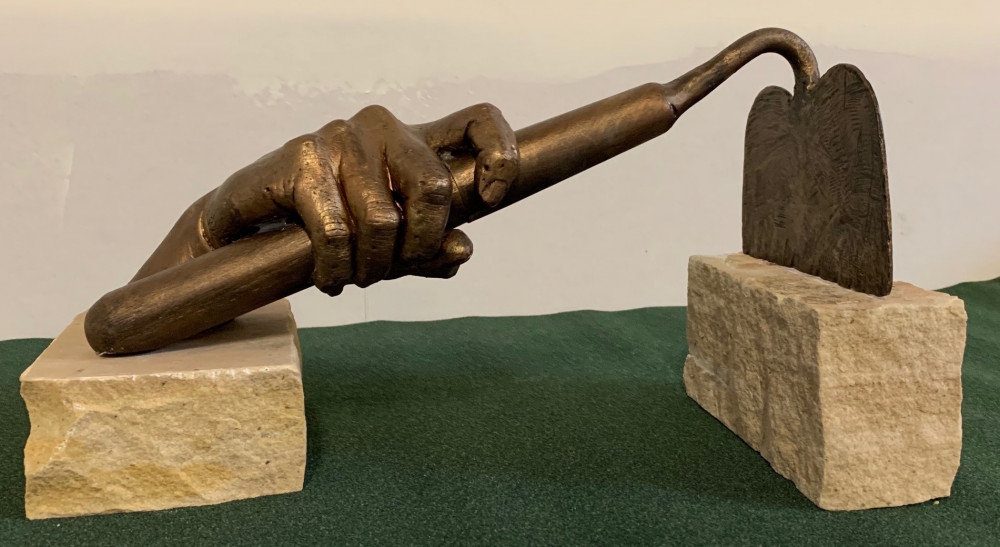The Hand that Feeds
- Artist
- Frank Garza
- Year
- 2021
- Location
- NE corner of Sugar Beet Park at Lemay Avenue and East Vine Drive
- Description
-
Donated by Mujeres de Colores, The Hand That Feeds sculpture celebrates the Hispanic and Mexican people who played a critical role in Fort Collins’ and Larimer County’s sugar beet history. The sculpture tells the story of the sugar beet worker:
- The Short-Hoe: Represents the back-breaking work required by the sugar beet workers.
- The Hand: Represents the Hispanic and Mexican people who came to this area to work the beet fields and eventually settling in Fort Collins.
The sugar beet industry, which started in Colorado in 1899, was the largest employer of Hispanics in Colorado by the late 1920s. Without their labor, the sugar beet industry and other labor-intensive agricultural industries in Colorado would not have prospered. Through their sweat and toil, Colorado became the largest sugar producing state in the United States in 1909.
Today sugar beet production is a small part of Colorado's economy, but in the twentieth century it was the most important agricultural activity in the state. Area farmers relied on sugar beets as an important cash crop, however, each harvest required thousands of non-unionized fieldworkers. Successful beet cultivation required periods of such intense drudgery that farmers had to find wage-laborers to expedite the work. Farmers and sugar companies actively recruited Mexicans and Chicanos, and the region drew many migrants.
The standard tool for working the sugar beets was the short-handled hoe. The short-handled hoe required workers to stoop over as they cultivated crops. Working with the short-handled hoe had long term health consequences for the laborers. Campaigns by United Farm Workers and others helped outlaw the use of the hoe in 1975.
Overtime, Great Western Sugar Factory developed three colonies in the Fort Collins area (Andersonville, Alta Vista, and Buckingham—or Tres Colonias) to house many of the workers. The colonies surrounded the sugar beet factory.
City Park Planning & Development staff worked with the donor to create a plaza design and landscaping to feature the sculpture on the NE corner of Sugar Beet Park at Lemay Avenue and East Vine Drive, across from the Tres Colonias neighborhoods.
